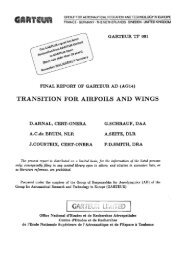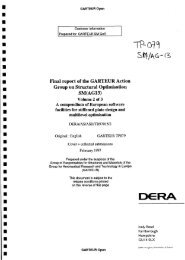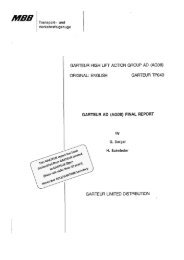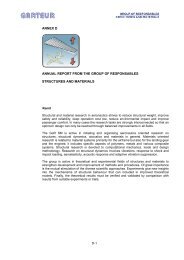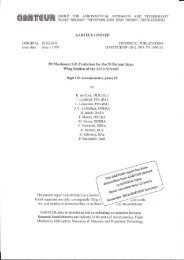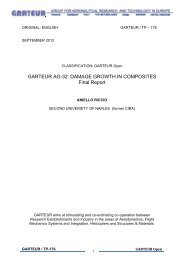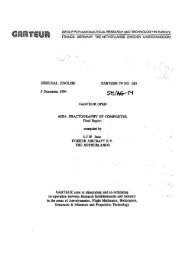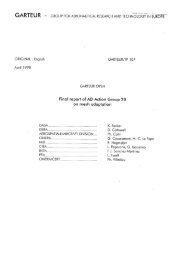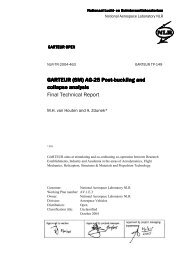Cadmium Substitution - garteur
Cadmium Substitution - garteur
Cadmium Substitution - garteur
You also want an ePaper? Increase the reach of your titles
YUMPU automatically turns print PDFs into web optimized ePapers that Google loves.
GARTEUR LIMITED<br />
Type A:<br />
Type B:<br />
electrical resistance across the complete lap joint<br />
electrical resistance between one end of lap joint<br />
and the fastener<br />
The aim of the work was to determine whether a conducting path could be established<br />
through the coated fastener.<br />
B.2.3<br />
Coating adhesion<br />
B.3 Results<br />
A low temperature tensile test method was employed by NLR to determine the adhesion<br />
of the coatings to the steel substrate. Details of the test procedure are given in reference<br />
[B1]. The tensile specimens used in these tests were tapered to give a gradual plastic<br />
strain distribution along the specimen axis as a result of tensile testing. After testing<br />
cross sections provided information on the crack density as a function of increasing<br />
plastic strain.<br />
B.3.1<br />
B.3.1.1<br />
Microstructure and composition<br />
Microstructure<br />
The microstructures of the eight coatings evaluated are shown in figures B2 and B3.<br />
SermeTel CR984/985<br />
The topcoat of the SermeTel CR984/985 is cracked. It can be seen that the SermeTel<br />
coating consists of two layers and the outer layer has been burnished to obtain electrical<br />
conductivity of the coating. The aluminium particles in the inorganic matrix are visible.<br />
The SermeTel coating is not completely dense and shows pores, also along the interface<br />
of the two sprayed layers.<br />
Electrodeposited zinc-cobalt-iron coatings<br />
Figure B2 shows the microstructure of the zinc-cobalt-iron coatings. The passivation<br />
layer is cracked and shows some features, which might originate from the passivation<br />
process. The cross sections show a columnar microstructure without cracks.<br />
Electrodeposited zinc-nickel coatings<br />
Some cracks through the coating down to the steel substrate can be seen. Remnants of<br />
the grit blasting process using alumina lead to subsurface cracks in the steel.<br />
Electrodeposited cadmium coatings<br />
The passivation layer is cracked. The cross sections of non-passivated and passivated<br />
coatings show different microstructure and the thickness of the non-passivated coating is<br />
two to three times the thickness of the passivated coating.<br />
Ion vapour deposited aluminium coatings<br />
Coatings supplied showed the normal porous structure (figure B3) found with ion vapour<br />
deposited coatings. Glass bead peening applied after plating tends to densify the coating<br />
Unbalanced magnetron sputtered aluminium magnesium coatings<br />
The aluminium coatings produced by unbalanced magnetron sputtering are very dense<br />
as indicated by the microgaph in figure B2 obtained using scanning electron microscopy.<br />
Electrodeposited aluminium coatings<br />
On the examination of cross sections using scanning electron microscopy, the electrodeposited<br />
aluminium coatings appear extremely dense as illustrated in figure B3.<br />
Page 48<br />
GARTEUR SM/AG17 TP128




